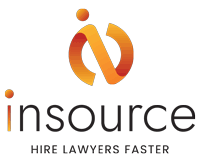Jenn Little, interview with Ben Paul CEO of The BD Ladder.
In this follow-up episode of the Business Conversations series, Jenn explores current shifts in legal recruitment and technology, the evolving needs of law firms, and the growing impact of data-driven hiring strategies. In short in this conversation Jenn shares how to save money when hiring lawyers.
The Latest Trends in Legal Recuritment – Summary of the Conversation
Jenn opens by highlighting a striking trend: a significant talent drain from New Zealand to Australia. As Australian firms face a shortage of qualified legal professionals, they’ve turned their attention to New Zealand as a talent pool. Over 70 lawyers from New Zealand’s top-tier and national firms were recruited by Australian firms between early 2023 and 2024. This demand has prompted Australian recruiters to establish a physical presence in New Zealand, intensifying the competition for local legal talent.
On the technology front, Jenn observes that small- to mid-sized law firms are finally prioritizing tech upgrades—particularly HRIS (Human Resource Information Systems)—to streamline operational processes. However, she notes that the cost and time investment required for implementation can deter these firms from adopting other tools that might offer quicker returns. That said, once a few firms adopt a new technology, others tend to follow—a herd mentality that’s driving increased uptake of systems among legal practice managers.
Discussing how law firms are adjusting their recruitment strategies in response to economic pressures, Jenn notes a rise in firms bringing recruitment in-house. This shift aims to cut costs and reduce dependence on traditional recruitment agencies. Firms are investing in robust recruitment tools, leveraging their own networks—including alumni—and engaging with offshore talent to plan future hiring needs. Jenn emphasizes that the traditional recruitment model is expensive, often incurring agency fees of around 18–20% of a lawyer’s salary. In Australia, with associate-level roles starting at $100,000, this means firms could easily spend $18,000–$20,000 per hire.
This context leads to a deeper discussion about Insource itself. Designed to help firms manage recruitment internally, Insource provides a technology platform that simplifies the hiring process and dramatically reduces costs. Jenn explains that many practice managers lack the time, skills, or resources to recruit effectively—challenges that Insource is designed to solve. The tool is built in close collaboration with law firms, incorporating user feedback to ensure it meets real-world needs. Firms using Insource report not only significant cost savings but also faster hiring timelines and improved talent matches. Which really higlights that using tech is key to save money when hiring lawyers.
Looking to the future, Jenn identifies the biggest challenge facing law firms in the next three to five years: recruiting and retaining top legal talent. To stay ahead, leading firms are investing in data to drive decisions around talent sourcing, firm growth, and retention strategies. Jenn shares a notable example—Insource’s recent partnership with a UK-based firm exploring expansion into Australia. The platform provided them with critical market insights that informed their cross-border strategic planning. This kind of intelligence, she notes, is becoming essential for firms hoping to remain competitive, especially as the most valuable legal talent is no longer actively applying for jobs. Firms must now proactively identify and attract top-tier candidates, in order to save money when hiring lawyers.
Conclusion – how to save money when hiring lawyers
The interview closes with Jenn reiterating her excitement about the direction Insource is heading and its role in transforming how law firms approach recruitment. For firms looking to stay competitive in a rapidly evolving legal landscape, the integration of smart tech, data analytics, and a proactive recruitment strategy appears more essential than ever.
For those law firms or those in charge of hiring in house legal teams, using legal tech, is key to saving money when hiring lawyers.
Further Information
You can watch Jenn’s original Business Conversation with Ben Paul here.
Find out more about Insource’s Legal Recruitment platform here.


